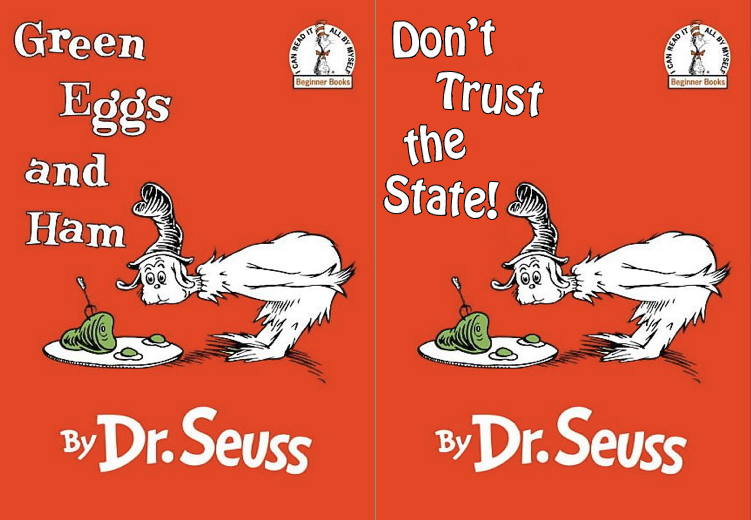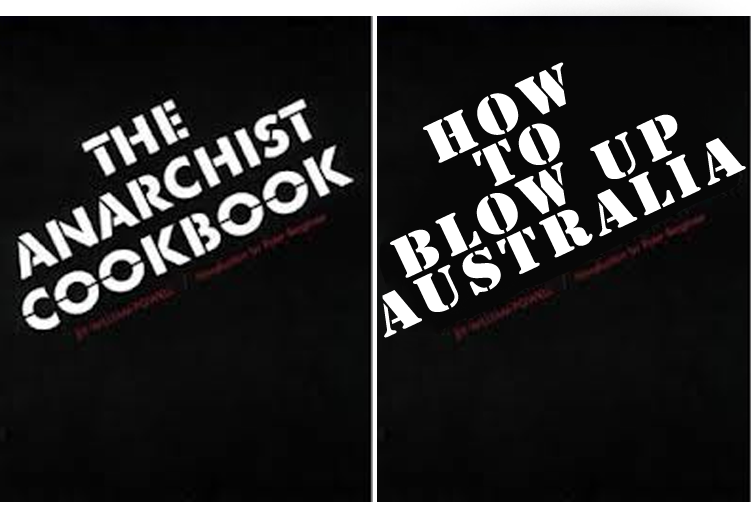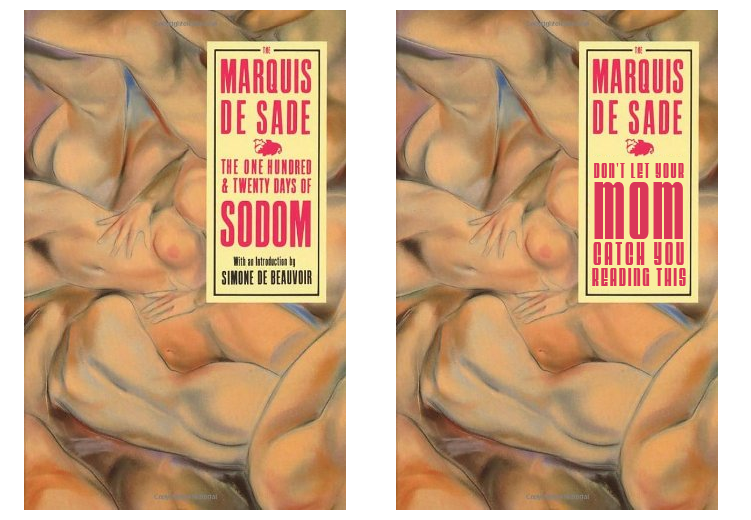Top Five Banned Books
by Geoffrey Stanton
Remember those old television PSA's that encouraged children to learn with the slogan "Knowledge is Power"? I grew up with those ads, and I can remember thinking that they were basically the cheesiest thing since the Kraft blue box. It wasn't until I started my undergraduate studies in Sociology that I realized just how much truth that simple statement contains. As a child, that slogan always made me picture a man trying to deflect bullets by rattling off geometric proofs, and it seemed pretty absurd. Somehow it never occurred to me that knowledge made the guns, too.
But even when knowledge isn't being used to directly build weapons it can still wield considerable influence. New ideas can pose a greater threat than guns and bombs if they can get the average citizen to examine their life and ask "is there a better way?" In some cases, seemingly innocent works of fiction contain veiled criticisms of the established government that are meant to incite popular dissent. Other times, great literary authors will pen shocking and controversial works that challenge the established social mores of a generation. And of course, every once in a while some guy in a cabin sits down at his typewriter and draft a quick-and-easy guide for how to wage violent war against the government. Whatever the case may be, the prospect of reading a book becomes so much more alluring when you know that it's forbidden in another part of the world. With that in mind, Private Island has put together a list of the "top" five books that have been banned at one time or another, ranging from the disturbing to the utterly absurd. We hope you enjoy it.
5. Green Eggs and Ham - Dr. Seuss

Anyone with a heart beating in their chest has probably read and loved Dr. Seuss's classic children's book, Green Eggs and Ham. But just in case anyone's unfamiliar, here's a brief summary: our nameless protagonist is made the target of repeated harrassment on the part of his friend(?) Sam I Am, who wants him to try a bizarre dish of... you guessed it, green eggs and ham. Avowing that he does not care for the meal, the unnamed man/creature repeatedly declines Sam I Am's offer in a variety of settings (on a train, in a box, etc.) and with a parade of guests (a fox, a mouse, a goat) until he is finally worn down and succumbs. Upon finally trying the green eggs and ham, he discovers that he loves them, and thanks Sam I Am for his persistence. This story is definitely meant to convey a lesson, although precisely what lesson is up for debate. It's most likely meant to highlight the benefits of trying new things, although it makes an equally strong case for the efficacy of being a persistent pain in someone else's ass. And according to the People's Republic of China, who banned the book outright in 1965, it is also a problematic Marxist allegory. Now, I studied a good deal of Marx while earning an undergraduate degree in Sociology, but I'll admit that I'm pretty baffled by this one. Perhaps they objected to Sam I Am's ability to produce his own eggs and distribute them as he sees fit, rather than trusting in the benevolent power of the State. Or maybe they were simply troubled by the stirring revolutionary imagery of a man and a fox eating ham on a train. Whatever the case may have been, the ban was lifted in 1991 following Dr. Seuss's death.
4. The Satanic Verses - Salman Rushdie

Seldom in the history of literature has a single work of fiction caused as much of a stir as The Satanic Verses. Written in 1988 by Salman Rushdie, an expatriate Indian living in England, the book describes the struggles of two fellow expats as they try to make their way as Muslim immigrants in Britain. The book's title makes reference to a pair of apocryphal Qu'ranic verses, which were originally included by the Prophet Muhammad before being removed and attributed to Muhammad's temptation by Satan. For this reason, The Satanic Verses angered conservative Muslims worldwide, who believed that the novel was making a mockery of their faith. This outrage incited the then-political/spiritual leader of Iran, Ayatollah Khomeni, to issue a fatwa for the death of Salman Rushdie and anyone else involved in the publication of The Satanic Verses. This prompted Rushdie to go into hiding, and even resulted in numerous assassination attempts. While Rushdie himself was never physically harmed, the radical Islamic group Mujahidin made it known that the August 1989 bombing of a hotel in London was the result of a malfunctioning suicide bomb that was intended for the author. In July of 1991, Hitoshi Igarishi and Ettore Capriolo, the book's Japanese and Italian translators, were both attacked and stabbed. Igarishi died, while Capriolo was gravely injured but escaped with his life. In October 1993, publisher William Nygard was shot three times in an assassination attempt but survived. Perhaps most shocking of all, in July 1993 in Sivas, Turkey, a group of Islamic radicals set fire to a hotel in an attempt to kill Aziz Nesin, an author who had translated parts of The Satanic Verses into Turkish. Though Nesin escaped due to a stroke of good luck, the "Sivas Massacre" claimed 37 lives. Interestingly, Turkey was among the only primarily Muslim nations that did not ban The Satanic Verses.
3. The Da Vinci Code - Dan Brown

In 2003, English suspense novelist Dan Brown released The Da Vinci Code, a wildly successful page-turner that played heavily upon the idea of a sinister and far-reaching conspiracy at the heart of the Roman Catholic Church. Before we continue, let me just say that I never actually read The Da Vinci Code--my basic rule of thumb is 'if you can buy it in an airport, I don't want to read it'--but anyway, here's what I was able to piece together of the plot from hearing my friends' parents talk about it. Since about the early Middle Ages, Christian scholars have been obsessed with the idea of recovering the Holy Grail--identified variously as either a) the cup from which Jesus drank at the Last Supper, or b) the goblet the collected the blood of Jesus when he was speared on the cross. Everyone wants this grail because it's... magic, or something, but its secrets are kept by the Priory of Sion. Anyway, long story short, it turns out that the long-sought object isn't a cup or goblet at all, but rather a person--a direct descendant of Jesus Christ. Jesus, it seems, was carrying on a sexual relationship with Mary Magdalene who bore him a child, thus creating a holy bloodline. Where does Da Vinci himself fit into all this? Well, apparently he was in on the secret, because his famous painting "The Last Supper" contains a hidden message that points at the truth about the Holy Grail. In the painting, the apostle directly to Jesus' right (our left), usually taken to be the apostle John, lacks a beard and has remarkably feminine features. This (the book claims) is because the figure depicted is NOT that of John, but of Mary Magdalene herself. The theory continues that the apostle John, known as "the one that Jesus loved", was not a real person, but rather was code for Mary Magdalene. And naturally, the Catholic Church is trying to suppress any knowledge of a direct descendant of Christ because the existence of such a person would challenge the authority of the Pope as Christ's legitimate successor on Earth. If you're thinking that this all just sounds like a bunch of exhausting nonsense... well, I'm with you on that. But these claims were taken extremely seriously by Catholics worldwide, making The Da Vinci Code a never-ending source of conflict and controversy. In 2004, sale of the book in three languages was banned outright in Lebanon for insulting Christ, spreading blasphemous libel about the Church, and generally instigating discord within religious communities.
2. The Anarchist Cookbook - William Powell

In 1971, William Powell sat down and wrote The Anarchist Cookbook as a way of protesting the United States' involvement in the Vietnam War, particularly the military drafting unwilling US citizens to go overseas and fight it. The book contained 150+ pages of practical instructions on how to live a life outside the strictures of government, divided into the following sections: Chapter 1, Drugs, which contains information about illegal or controlled substances and instructions on how to abuse legal substances such as cough syrup or hydrangea leaves; Chapter 2, Electronics, Sabotage & Surveillance, which contains chapters detailing how to both interfere with the government's spying devices and manufacture gadgets of your own; Chapter 3, Natural, Nonlethal & Lethal Weapons, which covers everything from the basics of hand-to-hand combat down to how to manufacture a homemade silencer or convert a shotgun into a grenade launcher; and Chapter 4, Explosives & Booby Traps, which details how to make explosives ranging in complexity from the Molotov Cocktail to nitroglycerin. Interestingly, Powell himself has since disavowed The Anarchist Cookbook, writing it off as an irresponsible product of his own adolescent angst. He even started several campaigns to petition the publisher (who by then owned the rights to the book's distribution) to remove the book from circulation, though it stayed in print until 1991. Even to this day, virtual copies of The Anarchist Cookbook are still easy to find online, often greatly revised and expanded by subsequent would-be revolutionaries who've added their own knowledge to the volatile tome. In or around 1997, my best friend at the time found a downloadable copy on the internet, printed it out on computer paper, and carried it around in his messenger bag. His copy contained a wealth of information not included in the original publication, including (from my memory) "How to hotwire a car", "how to make an underwater fuse", and "how to rig up a remote detonator." The Anarchist Cookbook is banned outright in Australia, but it enjoys a rather peculiar legal status in the US and Great Britain: it was legal to publish and it is legal to possess, but still stands as a damning piece of circumstantial evidence in the case of suspected terrorists. In other words: you can own it, but be really careful what you say in internet chatrooms if you do.
1. The 120 Days of Sodom - The Marquis de Sade

Few books exist in the world that can match the unfathomable depravity of The 120 Days of Sodom. It was written in the Bastille by The Marquis de Sade, a French nobleman whose reputation for engaging in acts of sexual cruelty give rise to the likely familiar term "sadism". The Marquis de Sade was an extreme libertine who stood against not only the rule of law but also the constraints of religion and morality. He was jailed numerous times over the course of his life for blasphemy and sexual misconduct, finally dying in an insane asylum under the rule of Napoleon Bonaparte. Due to his frequent incarceration, The 120 Days of Sodom is an unfinished manuscript, with only the first of four parts written in detail. The remaining three-fourths of the novel are merely outlines and margin notes from the Marquis himself, but what remains is still enough to chill most readers to the bone. The plot of The 120 Days of Sodom is as follows: four wealthy noblemen sequester themselves in a castle for five months, accompanied by a litany of attractive young men and women and four veteran prostitues. During the days, these prostitutes recount tales of shocking sexual perversity to the noblemen, who use their stories as a source of inspiration for committing unspeakable sexual acts that eventually result in the gruesome deaths of all but a handful of their "guests". At this point, the limits of good taste prohibit me from elaborating any further, but I will gladly direct the insatiable reader to the book's Wikipedia page. Needless to say, The 120 Days of Sodom is a tremendously controversial work. Though written in 1785, the manuscript did not see the light of day until 1904, when a German psychiatrist published it (under a pseudonym) as an illustrative example of extreme sexual deviance. Though it is now available to buy in several languages, The 120 Days of Sodom continues to stir up controversy, and was banned as recently as 2012 in South Korea. And yet, somehow, it was still made into a movie.
